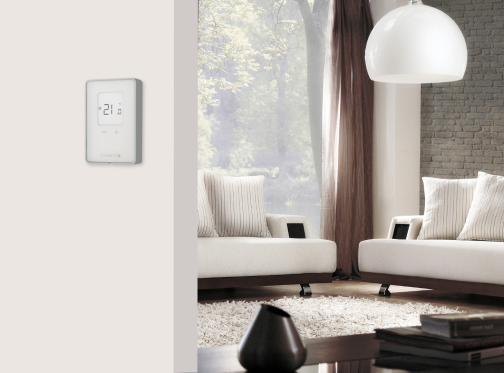
Upgrading to a New Electronic Thermostat
Are you renovating or updating your heat solution in your home? Now is a great time to upgrade your thermostat! Don't take our word for it - Bob and Elizabeth Youngman of Sun Valley City, Idaho, recently upgraded from basic bi-metal thermostats to electronic thermostats it has lowered heating bills and increased their in-home comfort. The Youngman's have had Cadet baseboard and wall heaters in their two-level townhome but have always had bi-metal thermostats since they bought it.
What are Bi-Metal Thermostats?
Those thermostats use two pieces of metal that are laminated together. Each type of metal has a different rate of expansion when heated and cooled, which is what controls the thermostat temperature. If you want to learn more about how bi-metal thermostats work, visit HowStuffWorks.com.

The Problem With Bi-Metal Thermostats and Why One Should Switch to Electronic Stats
When you set a desired temperature on the bi-metal thermostats, the heaters will power on until the temperature gets a little higher than you set it, then the heaters turn off.
The heaters will turn back on again when the room temperature drops below the set temperature, and the cycle repeats. This on/off swing can be significant. In contrast, electronic thermostats have digital sensors that are much more accurate and responsive. Those temperature swings are small. Bob said with the old thermostats, he would see big swings in temperature in his house. “With the new thermostats, that (the temperature swings) totally goes away,” he said. “You have a much more even temperature.” Bob is using the TH106 and TH401 electronic thermostats in parts of his home. Those thermostats have a baseboard setting allowing the thermometers to cycle every 15 seconds, giving the most consistent temperature control available.

Save Money By Getting an Electric Thermostat vs a Bi- Metal Stat
Bi-metals and electronic stats with fan heaters usually cycle about every 15 minutes. In addition to increased comfort, Bob said the electronic thermostats are saving him money on the heating bill. Bob reported a 30 percent reduction in the cost of heating his home in year over year. His thermostats were a gift, but he said that the increased comfort of programmable thermostats would easily pay for themselves because of the energy savings.
He estimated a savings of ~$35 per non-programmable electronic thermostat and $60 per programmable thermostat in just one season.
“The payback is a no-brainer,” he said.
Why not see the benefits for yourself and switch your bi-metal thermostat to an electric thermostat now! Cadet offers a variety of great electric thermostats. Shop the entire electric thermostat collection and find the perfect thermostat for your home.

